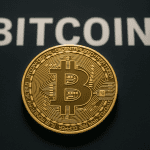Are South Korean Retail Traders the Only Thing Keeping Ethereum Treasury Companies Alive?
The Retail Engine and the Treasury Dilemma We live in a market shaped as much by myth as by math, and nowhere is that more obvious than in the relationship between Ethereum treasury companies and the whiplash rhythms of retail enthusiasm. When we ask whether South Korean retail traders are the only force keeping these treasuries alive, we’re really probing a bigger tension: can short, euphoric bursts of volume substitute for durable balance-sheet strategy? We think of Ethereum treasuries as ships loaded with digital fuel ETH pushing into swells of volatility. The captains can hedge, lend, stake, or diversify, but when the sea gets rough, they still need wind. Retail bursts often clustered by timezone, culture, and platform become those gusts. South Korea’s trading windows, social sentiment loops, and a culture of fast execution can produce sudden volumes that feel like a turbo button for liquidity. Yet, relying on a single turbo button is not a strategy; it’s an adrenaline habit. The healthier question is whether treasuries have built the muscle risk rails, revenue lines, hedges, and staking ladders to keep moving when the retail gust flips or fades. Because it always does.
Liquidity Whales vs. Weather Systems Let’s separate liquidity whales from weather systems. A whale one large buyer can move a price in moments. A weather system thousands of coordinated, time aligned retail traders reshapes the trading climate for hours or days. South Korean retail is closer to that second category: a system that can thicken order books, snap spreads tighter, and accelerate price discovery in a way that feels renewable, at least on good weeks. Treasury managers notice. When spreads compress and books get deep, it’s easier to rebalance ETH exposures, harvest staking rewards without spooking the market, and roll hedges with less slippage. But weather systems are seasonal. Social feeds can swap narratives overnight, exchange incentives can shift, and risk appetites can swing from fearless to frozen with one sharp wick. Treasury companies that bank on a single microclimate are like farmers who plant one crop and pray for the same rain pattern forever. Sensible desks install redundancy: cross-venue execution, automated hedging across maturities, structured ETH vs. stables corridors, and playbooks for grinding, low vol regimes. Retail can be a tailwind, even a rescue rope. It should never be the keel.
Treasury Playbooks: Beyond “Number Go Up”A modern Ethereum treasury that relies on “number go up” is writing poetry when it should be writing procedures. The durable playbook isn’t glamorous: define risk buckets for ETH (core holdings, liquid reserve, strategic), align each bucket with a hedge policy, and connect staking yield to operating expenses on a glide path rather than a gamble. Blend flexible ETH staking with liquidity tranches: a hot tranche for operational liquidity, a warm tranche for opportunistic buys and derivatives collateral, and a cold tranche for long-horizon staking. Wrap this with stress testing: What happens if ETH chops sideways for six months while gas stays sleepy? What if a sharp move traps you in illiquid staking positions? How do you cover payroll if spot volume collapses the same week an options hedge expires out of the money? In that framework, South Korean retail is a helpful factor a way to get fills, roll hedges, and offload basis risk rather than the oxygen line. Put differently, treasuries that survive treat retail flows like weather they can sail in, not weather they must summon.
Narratives, Reflexivity, and the K-Factor Markets are made by stories that trade, and few narratives move faster than those amplified by retail hives. We see a K-Factor call it a cultural reflexivity coefficient in how certain communities adopt, remix, and weaponize narratives. If a token’s purpose is a sentence, retail turns it into a chorus, and that chorus pushes price, which re writes the sentence. South Korean trading culture, with its high tempo engagement, can turn fragments of on-chain data into catalysts. For Ethereum treasuries, this reflexivity cuts both ways. It can accelerate needed liquidity right when a treasury is rebalancing or funding operations, but it can also amplify downside narratives that make risk desks overly defensive at the worst possible time. Mature treasuries blunt this reflexivity by pre-committing to rules: dollar cost hedging on schedules, capped leverage per volatility regime, and preapproved unwind ladders that don’t care whether the timeline is euphoric Seoul morning or sleepy New York afternoon. The game is not to mute the chorus it’s to ensure the song doesn’t dictate the ship’s route.
Conclusion: Robust by Design, Not by Crowd So, are South Korean retail traders the only thing keeping Ethereum treasury companies alive? No and if they are, that’s a design flaw begging to be fixed. Healthy treasuries live on process, not hype structured ETH buckets, rolling hedges, laddered staking, diversified liquidity, and scenario discipline that survives both thin books and roaring memes. South Korean retail can and often does supply meaningful liquidity and momentum, the kind that makes rebalancing smoother and execution cheaper. But vitality shouldn’t hinge on a single timezone’s appetite. Robust treasuries treat those flows as a welcome breeze across a well ballasted hull, not as the sole sail. In a market where narratives flash and fade, the winners are the desks that keep breathing even when the wind goes still.


















